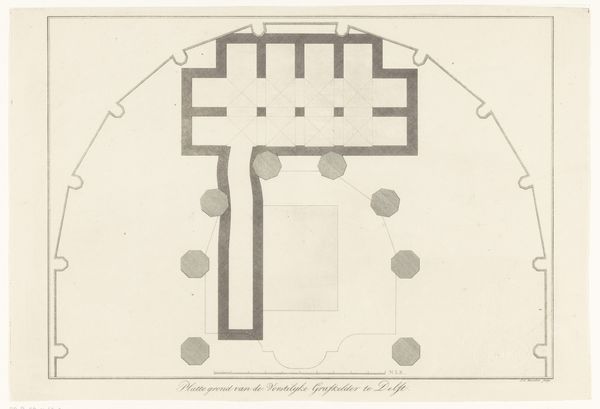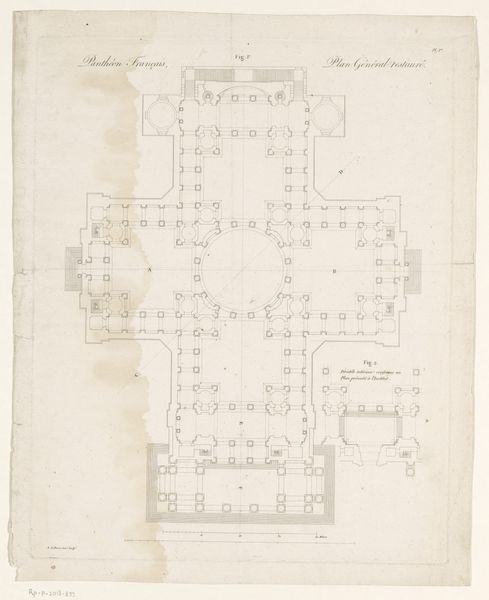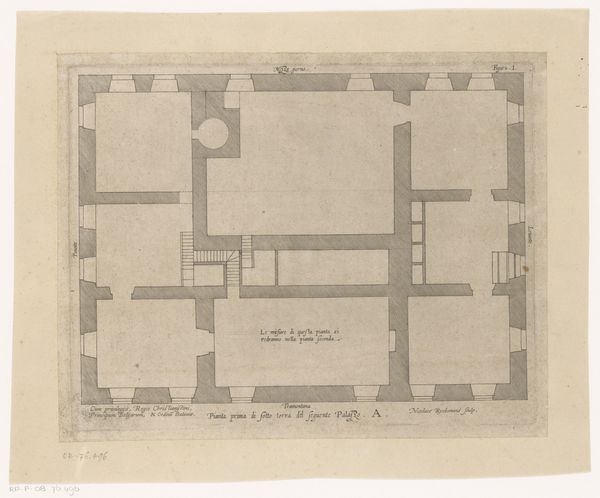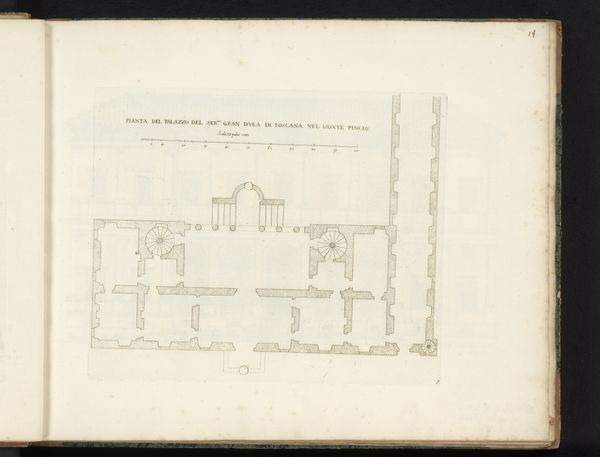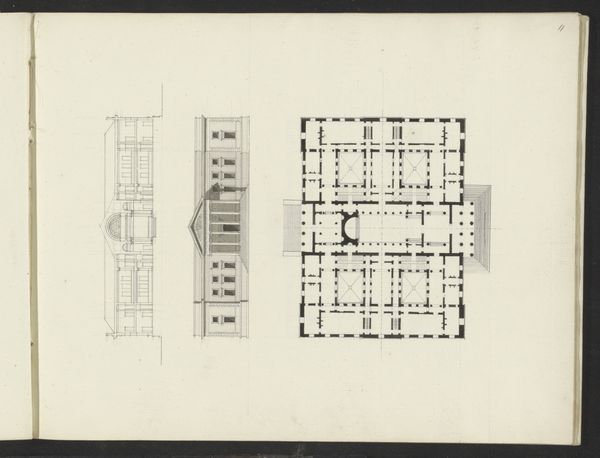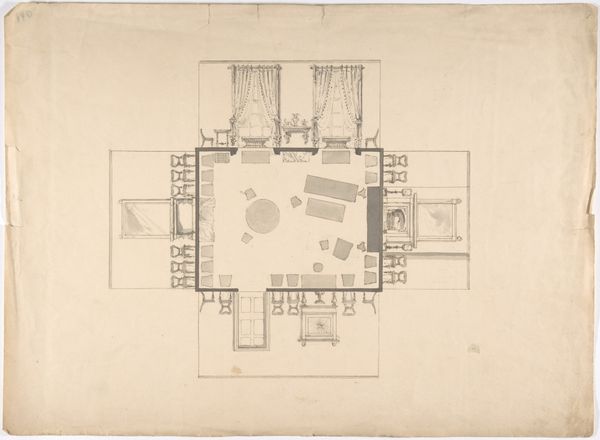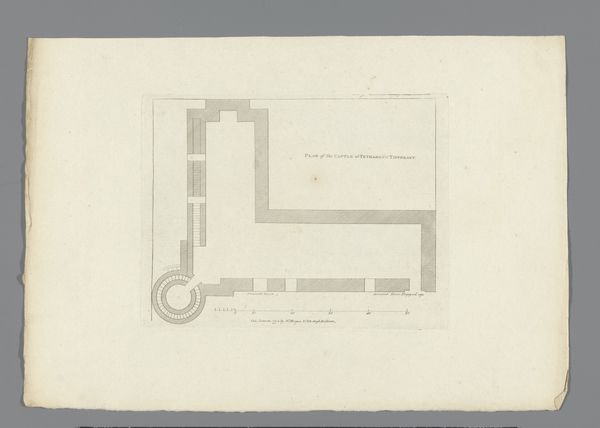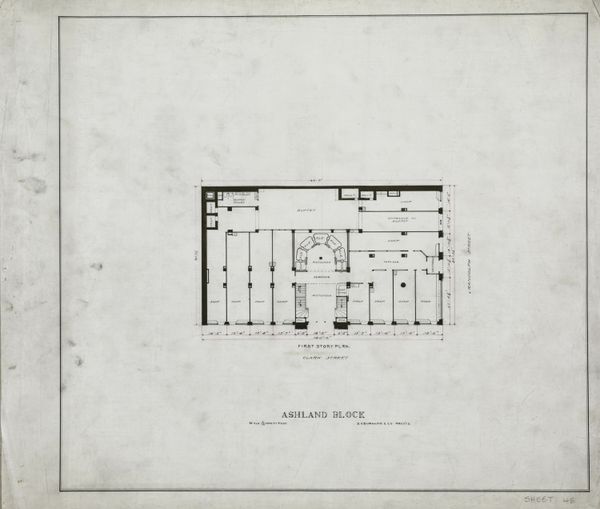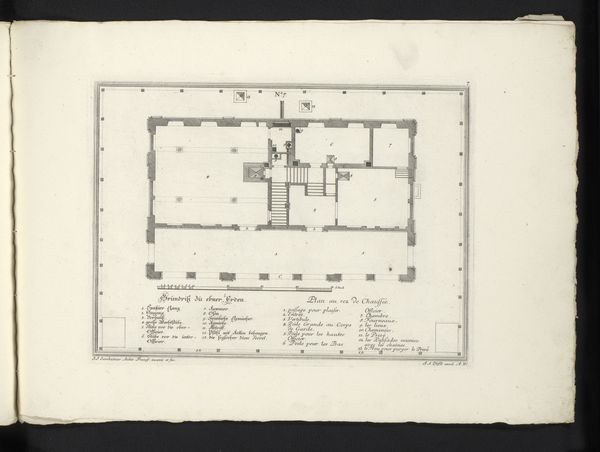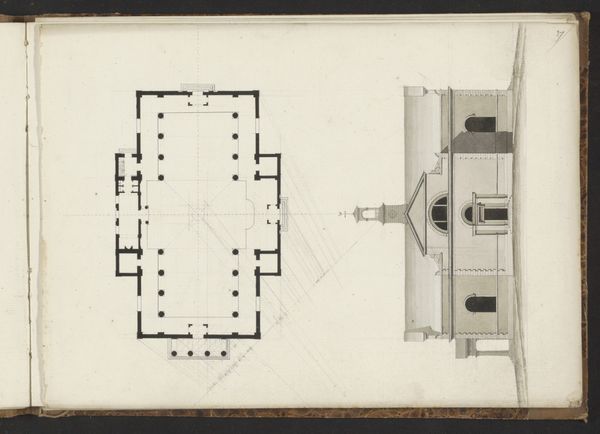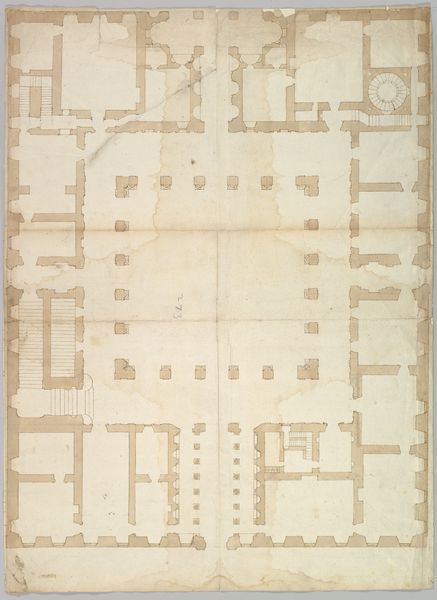
Plattegrond van de Botermarkt te Amsterdam met ontwerp voor een koepelkerk c. 1700 - 1705
0:00
0:00
drawing, paper, ink, architecture
#
drawing
#
baroque
#
paper
#
ink
#
geometric
#
cityscape
#
architecture
Dimensions: height 514 mm, width 715 mm
Copyright: Rijks Museum: Open Domain
Curator: Here we have "Plan of the Butter Market in Amsterdam with a design for a domed church" by Daniël Stopendaal, created between 1700 and 1705. It's ink on paper. Editor: My immediate reaction is one of stark contrast—an intriguing interplay of meticulous architectural precision against the backdrop of what appears to be an otherwise organic cityscape. Curator: Precisely. The geometrical forms, especially the proposed domed church, adhere to baroque principles. Note the deliberate symmetry, the balanced proportions… everything contributes to an impression of order. Editor: Order for whom, and at what cost? We have to consider Amsterdam’s sociopolitical context. The Golden Age was fueled by global trade—often exploitative—and a visual representation of a market, or of the gentrification of an area, like the intended domed church, brings those power dynamics into sharp focus. Who benefits from this beautification project? Curator: A valid point. However, before venturing too far into socio-political analysis, let's consider Stopendaal’s handling of perspective. Look closely at the orthogonals: they are deliberately understated. There’s no forceful recession into space. Instead, a flatness emerges, emphasizing the graphic nature of the work. Editor: And it's that flatness that actually resonates for me. It lends a detached, almost clinical feel. It doesn’t romanticize the subject matter. The drawing exists as a record—potentially propagandistic—of power and its reach into the city. It is a power that disciplines the masses via marketplaces and churches alike. Curator: The almost diagrammatic style offers viewers clear, almost scientific insights. Its precision certainly invites structuralist interpretations—the relationships between components being essential for meaning. Editor: Agreed. Though a pure formalist analysis risks missing how art documents ideology. It's the intended imposition of design, even faith, upon a community’s existing structures that interests me most here. I can only imagine how the implementation of such an austere church would alter the dynamic. Curator: And the discussion of those complex interrelations certainly reveals the dynamism, even within a carefully calibrated architectural drawing such as this one. Editor: Indeed. This piece underscores art’s vital function as both an aesthetic object and a sociocultural text that can be dissected and debated even today.
Comments
No comments
Be the first to comment and join the conversation on the ultimate creative platform.
